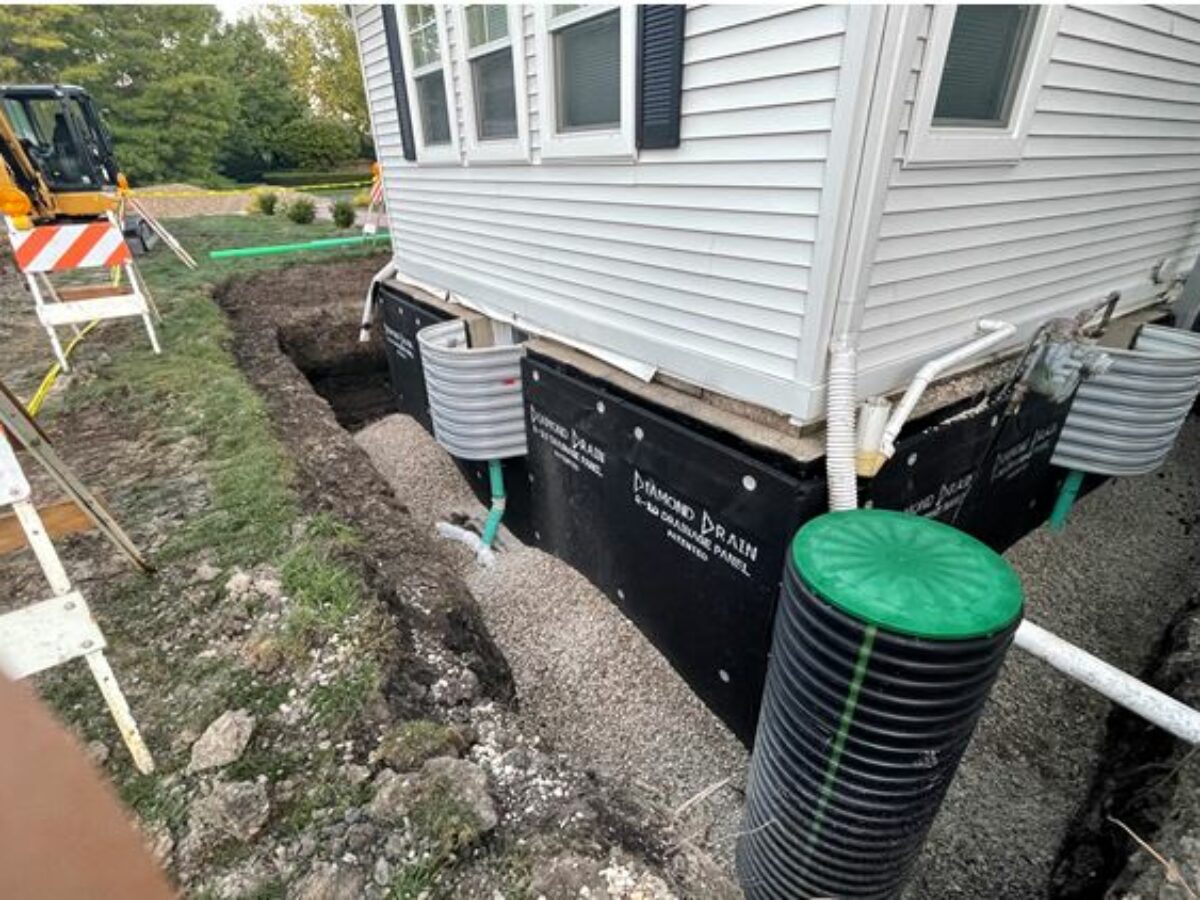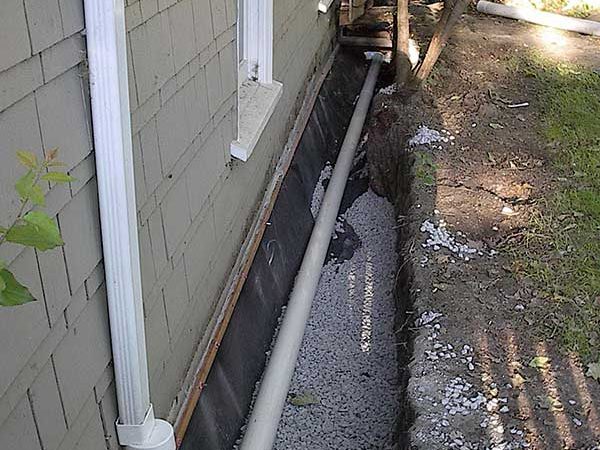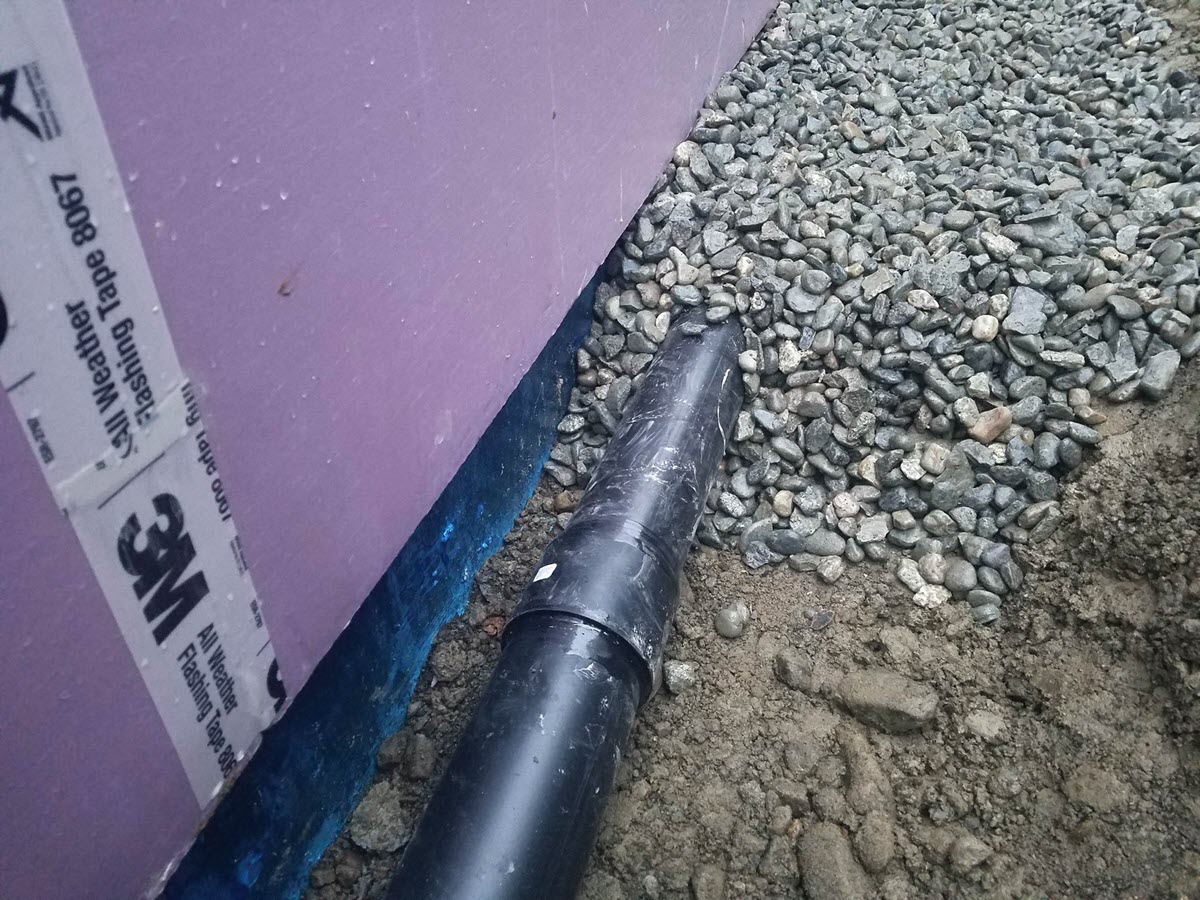Foundation Drain Servicesin Troy MI
Foundation Drain Solutions to Keep Your Building Secure
We Are Locally Owned & Operated For Over 37 Years
Contact Us Today!
We Serve Businesses In And Around The Following Cities:
About Foundation Drain Services
Introduction to Foundation Drainage Systems
In the commercial landscape of Troy, an imperative aspect of property care is the maintenance of foundation health. Foundation drain plays a quintessential role in this by preventing water accumulation around commercial structures. Consistent moisture in the vicinity of a building foundation could lead to significant challenges such as cracking, erosion, and even structural failure. Hence, implementing a foundation drainage system becomes essential for preserving the robustness and longevity of your property.
The Intricacies of Foundation Drainage
The mechanism of a foundation drain is remarkably straightforward and efficient. Incorporated during the construction phase, the drainage structure typically involves an exterior foundation drain installed at the level of the footing around the building’s perimeter. This process is also referred to as installing a foundation drain. A foundation footer drain functions to collect the excess water around the structural base and directs it away, thereby, preventing foundation water seepage. It is aptly referred to as a drain around the foundation or a foundation perimeter drain.
Several types of foundation drainage systems are commonly in use such as the foundation french drain. This system primarily utilizes a pipe with small holes, sheltered by gravel or crushed stones. It captures the infiltrated water around the foundation and transfers it away from the structure, effectively ensuring house foundation drainage.
Bridging the Gap between Principle and Practice
In the context of commercial spaces in Troy, there is growing recognition in the real-world applications of productive foundation drainage systems. Consider the example of a local office building that frequently encountered basement dampness due to a lack of proper drainage near the foundation. Upon installing a foundation drain system using the principles of a foundation french drain, the problem was permanently eliminated. A drain system around the foundation effectively channeled the accumulated rainwater away from the property, mitigating the risk of foundation damage.
Another instance is a retail complex in Troy that was facing issues with water seeping into their underground storage units. By installing a foundation wall drainage system in cooperation with D&J Contracting, the property owners were able to rectify this problem permanently. In this setup, an exterior drain was professionally administered around the perimeter of the complex leading to significant enhancement of the foundation water drainage system. It created a reliable solution for diverting water, thereby, safeguarding the infrastructure integral to the business.
The Multifaceted Advantages of Foundation Drainage
Properly executed foundation drainage systems provide manifold benefits. The most notable is it protects the commercial building’s foundation, which is integral to its structural integrity. It helps to drain water away from house foundation and thereby reduce the pressure on walls, discourage mold growth, decrease dampness, and increase the usable area. Businesses can maximize space utility and also improve the overall hygiene of the workspace.>
Running With the Right Partner: D&J Contracting
It is important to work with experienced professionals while dealing with foundation drainage systems. In the city of Troy, D&J Contracting is a reputable name for services relating to foundation drains. With expert knowledge of the terrain and local climate, D&J Contracting ensures a tailored strategy for installing a foundation drain, taking into account the unique needs of every commercial property. A reality check of foundation drain systems installed by D&J Contracting has revealed that they successfully drain water from foundation, effectively avoiding any costly repairs induced by potential water damage in the long run.
Harmonizing with Drain Considerations
Identifying the necessity of a strong foundation drainage system, particularly in locations experiencing prevalent rainfall or have high groundwater tables is essential. However, even if you own commercial property in areas with fewer precipitation incidents, a properly installed foundation perimeter drain could still be a valuable investment. Notably, parcels situated on a slope or those with basements will particularly benefit from an optimally functioning foundation drain, as it smartly drains water away from house foundation.
Now that you’ve seen the technical, practical, and financial implications of a well-designed foundation drainage system, consider how this knowledge applies to your property’s specific needs. All aspects considered; the rationale behind investing in a trusted and professional contracting service like D&J Contracting for your foundation drain requirements is clear.
The Final Step: Putting Knowledge into Action
Mulling over the aforementioned aspects, it’s clear that an efficient foundation drainage system is a non-negotiable aspect of commercial construction and property maintenance. An ideal contractor, like D&J Contracting, will not only provide a top-tier foundation drain suited to your infrastructure needs but also contribute actively towards maintenance checks.
Given the noticeable benefits ranging from structural safety to increased property value and more, it’s essential to ensure the health of your property’s foundation. So, are you ready to make the smart call to safeguard your commercial property’s foundation in Troy? Eager to witness the remarkable transformation that an optimal foundation drainage system can bring to your property? It’s time to make that choice – embrace the reassurance that comes with a drainage system designed to protect and enhance your hard-earned investment.
Foundation Drain Services Gallery


Call Us Today to receive your Free Quote for
Foundation Drain in Troy
Serving: Troy, Michigan

About Troy, Michigan
The earliest recorded purchases of land in what was known as Troy Township occurred in 1819. A couple of years later, a settlement known as Troy Corners was established due to Johnson Niles buying 160 acres in the region. The area is currently the north-central area of Troy. In 1827 Troy Township was established. In 1955, Troy was officially incorporated primarily as a strategy for preventing border cities from taking more land. This also helped to establish more robust city services for Troy residents, whose numbers increased rapidly during this time due to Detroiters fleeing the city for the surrounding suburbs.
It was named after Troy, New York and the ancient city of Troy as many of the early settlers, as in much of Michigan, originated from New York.
According to the United States Census Bureau, the city has a total area of 33.64 square miles (87.13 km), of which 33.47 square miles (86.69 km) is land and 0.17 square miles (0.44 km) (0.51%) is water.
| Census | Pop. | Note | %± |
|---|---|---|---|
| 1960 | 19,402 | — | |
| 1970 | 39,419 | 103.2% | |
| 1980 | 67,102 | 70.2% | |
| 1990 | 72,884 | 8.6% | |
| 2000 | 80,959 | 11.1% | |
| 2010 | 80,980 | 0.0% | |
| 2020 | 87,294 | 7.8% | |
| 2023 (est.) | 87,339 | 0.1% | |
| U.S. Decennial Census 2018 Estimate |
|||
According to a 2018 estimate, the median income for a household in the city was $96,864, and the median income for a family was $113,640. Males had a median income of $72,005 versus $52,365 for females. The per capita income for the city was $46,664. About 5.1% of families and 7.2% of the population were below the poverty line, including 6.7% of those under age 18 and 6.1% of those age 65 or over.
As of the census of 2020, there were 87,294 people, 33,822 households, and 24,300 families living in the city. The population density was 2,609.9 inhabitants per square mile (1,007.7/km). There were 34,953 housing units at an average density of 1,044.9 inhabitants per square mile (403.4/km). The racial makeup of the city was 62.2% White, 4.0% African American, 0% Native American, 27.3% Asian, 1.2% from other races, and 5.1% from two or more races. Hispanic or Latino residents of any race were 2.2% of the population.
There were 33,822 households, of which 35.4% had children under the age of 18 living with them, 60.1% were married couples living together, 8.3% had a female householder with no husband present, 3.4% had a male householder with no wife present, and 28.2% were non-families. 23.2% of all households were made up of individuals, and 10.1% had someone living alone who was 65 years of age or older. The average household size was 2.56 and the average family size was 3.05.
The median age in the city was 43.9 years. 20.7% of residents were under the age of 18; 8.8% were between the ages of 18 and 24; 32% were from 25 to 44; 28.6% were from 45 to 64; and 19.7% were 65 years of age or older. The gender makeup of the city was 50.5% male and 49.5% female.
| Race / Ethnicity (NH = Non-Hispanic) | Pop 2000 | Pop 2010 | Pop 2020 | % 2000 | % 2010 | % 2020 |
|---|---|---|---|---|---|---|
| White alone (NH) | 65,809 | 58,869 | 53,793 | 81.29% | 72.70% | 61.62% |
| Black or African American alone (NH) | 1,678 | 3,210 | 3,422 | 2.07% | 3.96% | 3.92% |
| Native American or Alaska Native alone (NH) | 105 | 124 | 108 | 0.13% | 0.15% | 0.12% |
| Asian alone (NH) | 10,713 | 15,439 | 23,788 | 13.23% | 19.07% | 27.25% |
| Pacific Islander alone (NH) | 18 | 1 | 9 | 0.02% | 0.00% | 0.01% |
| Other race alone (NH) | 79 | 125 | 312 | 0.10% | 0.15% | 0.36% |
| Mixed race or Multiracial (NH) | 1,373 | 1,502 | 2,908 | 1.70% | 1.85% | 3.33% |
| Hispanic or Latino (any race) | 1,184 | 1,710 | 2,954 | 1.46% | 2.11% | 3.38% |
| Total | 80,959 | 80,980 | 87,294 | 100.00% | 100.00% | 100.00% |
As of the census of 2010, there were 80,980 people, 30,703 households, and 22,443 families living in the city. The population density was 2,419.5 inhabitants per square mile (934.2/km). There were 32,907 housing units at an average density of 983.2 per square mile (379.6/km). The racial makeup of the city was 74.1% White, 4.0% African American, 0.2% Native American, 19.1% Asian, 0.6% from other races, and 2.0% from two or more races. Hispanic or Latino residents of any race were 2.1% of the population.
There were 30,703 households, of which 34.7% had children under the age of 18 living with them, 62.8% were married couples living together, 7.3% had a female householder with no husband present, 3.0% had a male householder with no wife present, and 26.9% were non-families. 23.4% of all households were made up of individuals, and 9.6% had someone living alone who was 65 years of age or older. The average household size was 2.63 and the average family size was 3.14.
The median age in the city was 41.8 years. 23.8% of residents were under the age of 18; 6.7% were between the ages of 18 and 24; 24% were from 25 to 44; 31.6% were from 45 to 64; and 13.8% were 65 years of age or older. The gender makeup of the city was 49.3% male and 50.7% female.
From the census of 2000, there were 80,959 people, 30,018 households, and 21,883 families living in the city. The population density was 2,413.9 inhabitants per square mile (932.0/km). There were 30,872 housing units at an average density of 920.5 per square mile (355.4/km). The racial makeup of the city was 82.30% White, 2.09% African American, 0.15% Native American, 13.25% Asian, 0.02% Pacific Islander, 0.36% from other races, and 1.82% from two or more races. 1.46% of the population was Hispanic or Latino of any race.
There were 30,018 households, out of which 36.9% had children under the age of 18 living with them, 64.5% were married couples living together, 6.0% had a female householder with no husband present, and 27.1% were non-families. 22.8% of all households were made up of individuals, and 7.8% had someone living alone who was 65 years of age or older. The average household size was 2.69 and the average family size was 3.23.
In the city 26.2% of the population was under the age of 18, 6.7% from 18 to 24, 29.8% from 25 to 44, 27.1% from 45 to 64, and 10.2% who were 65 years of age or older. The median age was 38 years. For every 100 females, there were 98.1 males. For every 100 females age 18 and over, there were 94.8 males.
From 1990 to 2000, of all of the municipalities in Oakland, Wayne, and Macomb counties, Troy had the highest numeric growth in the Asian population. It had 4,932 Asians according to the 1990 U.S. Census and 10,730 according to the 2000 U.S. Census, an increase of 5,798. The increase gave Troy the largest Asian-American population in the tri-county area, surpassing that of Detroit.
Troy uses the council–manager form of government, and thus is governed by a city council consisting of a mayor and six council members. The current mayor is Ethan Baker, who was elected to a four-year term on November 5, 2019. The city council appoints a City Manager, who manages the day-to-day operations of the city.
The City of Troy and City of Clawson on its southern border compose Michigan’s 41st District for State Representative. The district is currently represented by Padma Kuppa in the State House since 2019, and in the state Senate by Mallory McMorrow, since 2019. The district was previously represented in the State House by Martin Howrylak since 2013, and in the state Senate by Marty Knollenberg, since 2015. On the national level, Troy was part of the 9th district, represented by Joe Knollenberg from 1993 to 2009 and Gary Peters, who defeated Knollenberg in a highly publicized race in November 2008. Nationally, Troy is part of the 11th district, held by Democrat Haley Stevens.
Troy is the location of Walsh College, a business school, as well as branches of the University of Phoenix, Northwood University, Central Michigan University, Spring Arbor University, International Academy of Design and Technology, and Michigan State University.
There are seven school districts serving Troy; however, Troy School District serves the majority of the city limits. The district has multiple elementary schools, four middle schools, and two zoned high schools: Troy High School and Athens High School.
Three school districts have sizable portions of territory in Troy and operate at least one elementary school within the city: Avondale School District, in the north and northwestmost portion of the city; Birmingham City School District, in the southwestmost portion; and Warren Consolidated Schools, in the southeast, which operates Susick Elementary within the city. In addition, two other school districts are located in part in Troy but have no schools within the city limits: Bloomfield Hills School District, with a portion of the northwest part of the city, and Royal Oak School District, which has a very small portion of the southern part of the city. Finally, a small area of commercial property also in the south lies within the borders of Lamphere Public Schools
The Troy School District also hosts the eastern campus of the International Academy. Private schools include Bethany Christian School, Brookfield Academy, Oakland Children’s Academy, St. Mark Christian Academy and Troy Adventist Academy.
Call Us Today to receive your Free Quote for
Foundation Drain in Troy
Related Services in Troy, Michigan
We Serve Businesses In The Following Zip Codes:
48007, 48015, 48021, 48026, 48035, 48036, 48038, 48042, 48043, 48044, 48045, 48046, 48047, 48048, 48050, 48051, 48066, 48071, 48080, 48081, 48082, 48083, 48084, 48085, 48088, 48089, 48090, 48091, 48092, 48093, 48098, 48099, 48225, 48230, 48236, 48310, 48311, 48312, 48313, 48314, 48315, 48316, 48317, 48318, 48397